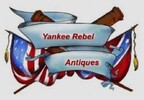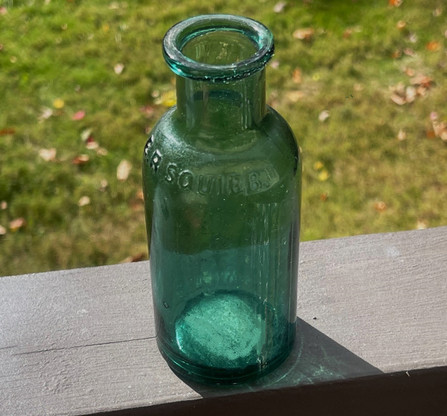 Loading... Please wait...
Loading... Please wait...-
Call us on (973) 810-2976
- My Account
- Gift Certificates
- Items / $0.00
All prices are in All prices are in USD
Categories
- Home
- Medical Related Items
- VERY RARE – Excavated Civil War U.S. Army Field Hospital “E.R. Squibb” Medicine Bottle
- Home
- NEW ITEMS
- VERY RARE – Excavated Civil War U.S. Army Field Hospital “E.R. Squibb” Medicine Bottle
- Home
- Identified Artifacts
- VERY RARE – Excavated Civil War U.S. Army Field Hospital “E.R. Squibb” Medicine Bottle
- Home
- Excavated Artifacts
- VERY RARE – Excavated Civil War U.S. Army Field Hospital “E.R. Squibb” Medicine Bottle
VERY RARE – Excavated Civil War U.S. Army Field Hospital “E.R. Squibb” Medicine Bottle
Product Description
This Civil War relic is the earliest example of an embossed “ER Squibb” bottle; it is an emerald green in color, with an applied top and “dot” base. The bottle is 6¼ inches tall and 2 inches in diameter at the base. This bottle was recovered in the 1990s at an 1862-1863 Union N.Y. Infantry Camp near Brooke Station, Virginia.
This area is where wagons and ambulances and over 400 artillery pieces, marched from Warrenton through Stafford and occupied the Stafford Heights overlooking Fredericksburg. About 75 percent of the army fought in the battle of Fredericksburg from Stafford (December 11-15, 1862).
During the four years when Dr. Squibb served on various ships as a U.S. Navy medical officer, he observed the poor quality of medicines supplied to the Navy. He persuaded the Navy to manufacture their own drugs instead of contracting for them from the lowest bidder.
After Squibb had resigned from the Navy, Dr. Richard S. Satterlee, Surgeon General of the U.S. Army, suggested that Squibb start a laboratory of his own to supply the Army with reliable drugs. After borrowing $1,300 from a friend, he set up a laboratory in Brooklyn in 1858.
His drugs and medicines were in great demand during the Civil War. Large numbers of surviving tins clearly illustrate the popularity of this form of packaging. Bottles, however, remained a popular form of container for medicines throughout the war. The Army used both plain civilian bottles and the rarer Hospital Department bottle. After the war, his two sons joined the firm, which became E.R. Squibb & Sons. Bottles labeled with “& Sons” are post-Civil War.
This is a rare and beautiful bottle – definitely museum-worthy. There are no flaws or chips and typical of early glass, a few air bubbles. There are more “U.S. HOSP. DEPT.” bottles that show up than Squibb bottles. This would make an excellent addition to any Civil War or Medical collection.



